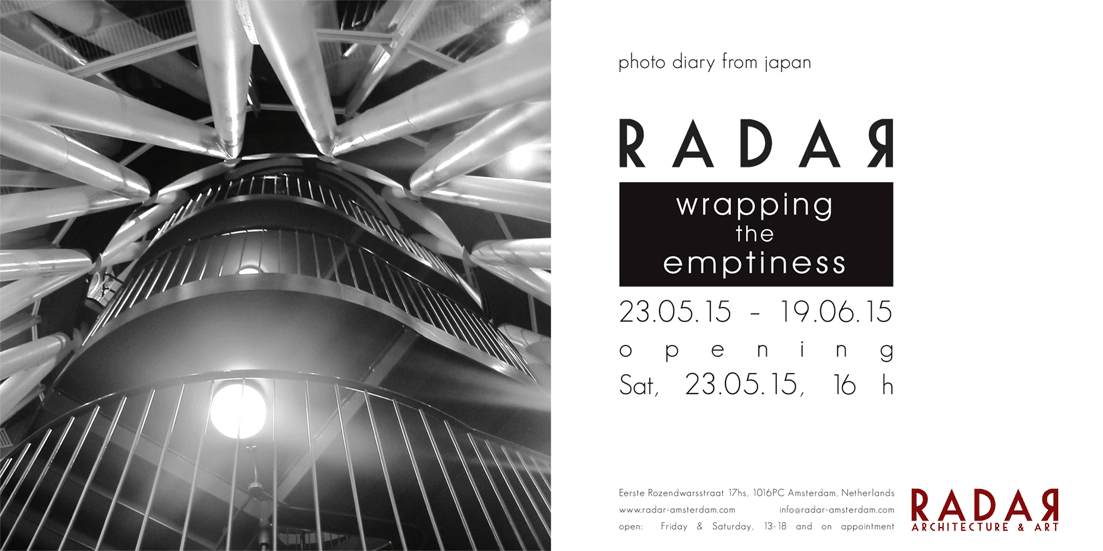wrapping the emptiness






















Saturday, May 23rd, 2015 the exhibition of photographic installations "Wrapping the
Emptiness” started at the Radar Gallery.
The exhibition of about 60 photos is the result of a trip of the Radar Group to Japan in
October 2014.
The visitor was invited on a journey to discover nine cities in Japan, from the megalopolis of
Tokyo through the sacred temples of Kyoto, to the peripheral cities of Hokkaido up north and
Kyushu in the south, where the masters of architecture and landscape design have left their
distinctive mark. The photos were be shown in a special display designed and created by
Radar Architecture.
Theme of the exhibition
The exhibition ''Wrapping the Emptiness'' aimed to highlight the following three themes:
a) The historical attitude (still present today) of Japanese artists to favor shadow as the main
instrument in the creation of spaces. To this end, the entire exhibition design curated by
Radar focuses on the idea of the clustering several pictures in boxes which the visitor will
have to approach closely. Through a small hole he will then observe the images, necessarily
confronted with shadow. The viewer will be able to isolate himself for a moment from the rest
of the exhibition and focus on the images in the single box in a very intimate and intense way.
b) The extreme differentiation of Japanese architecture is the second key to interpret the
exhibition. The current tendency to associate Japanese spaces to minimalism is being
confronted with Japanese eclecticism, that actually has always dominated Japanese
architecture and art, from ancient temples to the movement from the Sixties/Seventies called
Metabolism, considered the last bastion of all modernist avant-guard movements.
As a matter of fact the common denominator of minimalism and eclecticism (trends
seemingly very different) is the skillful use of shadow, an element that has always played a
very important role in Japanese spaces, in contrast to European architecture where light
tends to predominate.
c) The uttermost grace in dealing with nature is another common denominator of Japanese
architects, artists, writers and philosophers of all times and the third theme of the exhibition.
Wrapping the natural void to create a shelter for man is manifested through an artificial, if not
spiritual, recreation of nature within the spaces themselves, whether in ancient temples or the
eclectic buildings of the Metabolists in the Sixties and Seventies or the more recent
architectural works in mega-cities like Tokyo or Osaka or in the more provincial Japanese
cities. Next to the recreation of nature within spaces, also the exceptional grace and care
with which the Japanese masters blend buildings into surrounding nature, has to be noted.